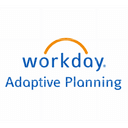

Ask questions about your Workday Adaptive Planning data
Connect Workday Adaptive Planning to Filament and turn complex dashboards, analytics, and business intelligence into a simple conversation. No spreadsheets. No setup. Just instant answers.
Workday Adaptive Planning gives you budgets, forecasts, and variance reports, but understanding how your financial plans compare to actual revenue performance, marketing spend efficiency, or operational costs means connecting to your CRM, accounting system, and operational tools. Filament links your Workday Adaptive Planning data to these platforms and answers questions about forecast accuracy, budget variance drivers, and cross-functional spending patterns in plain English.
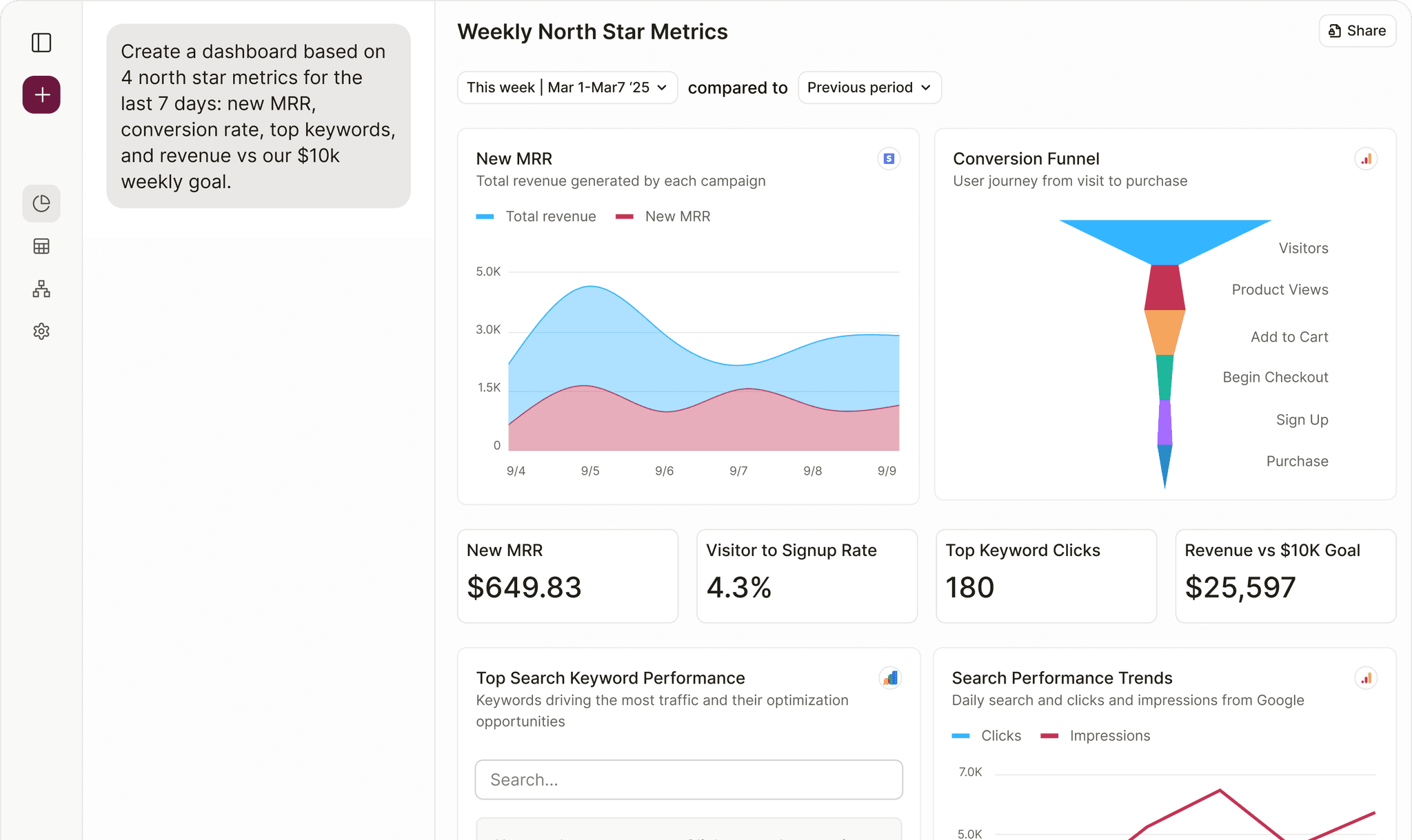
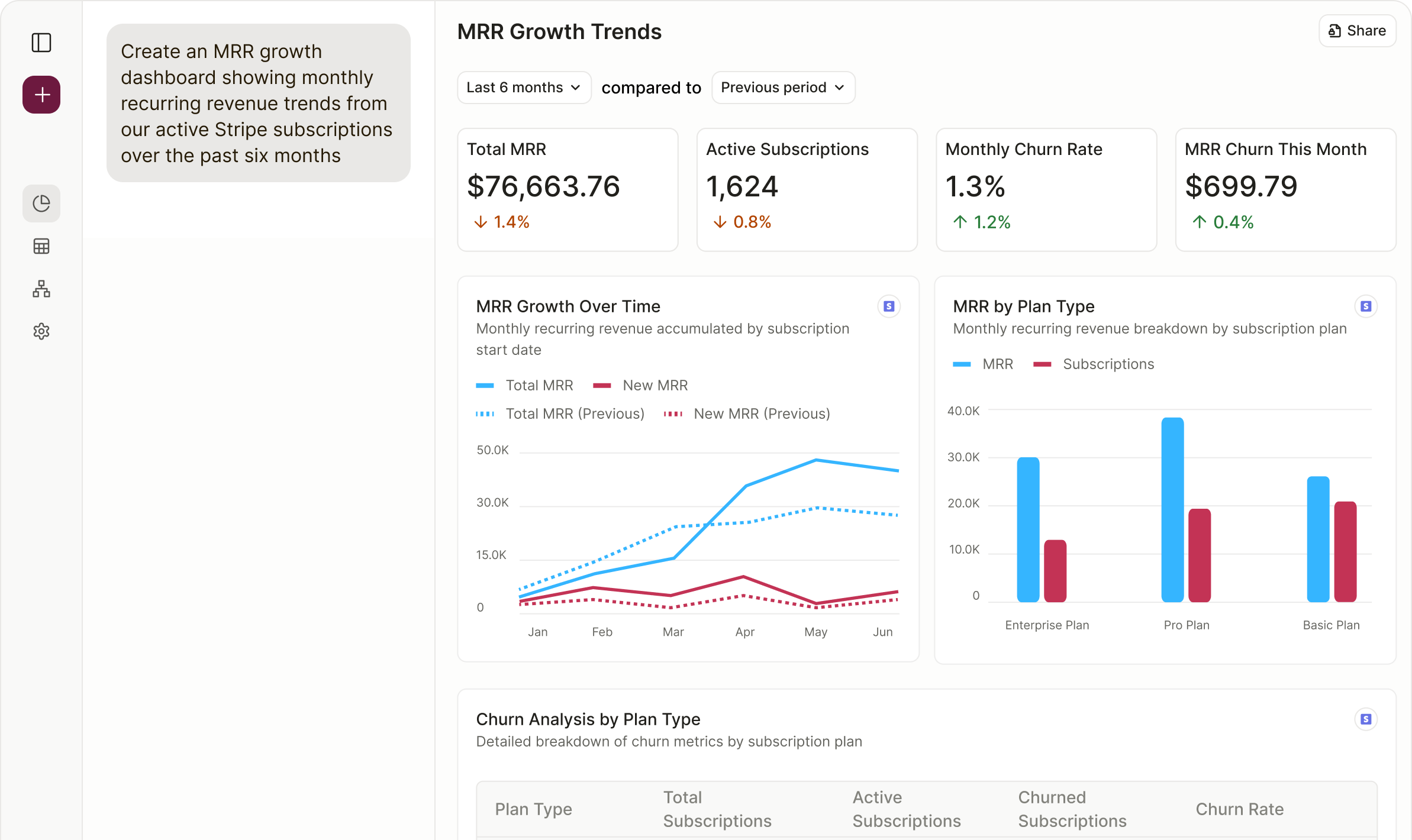
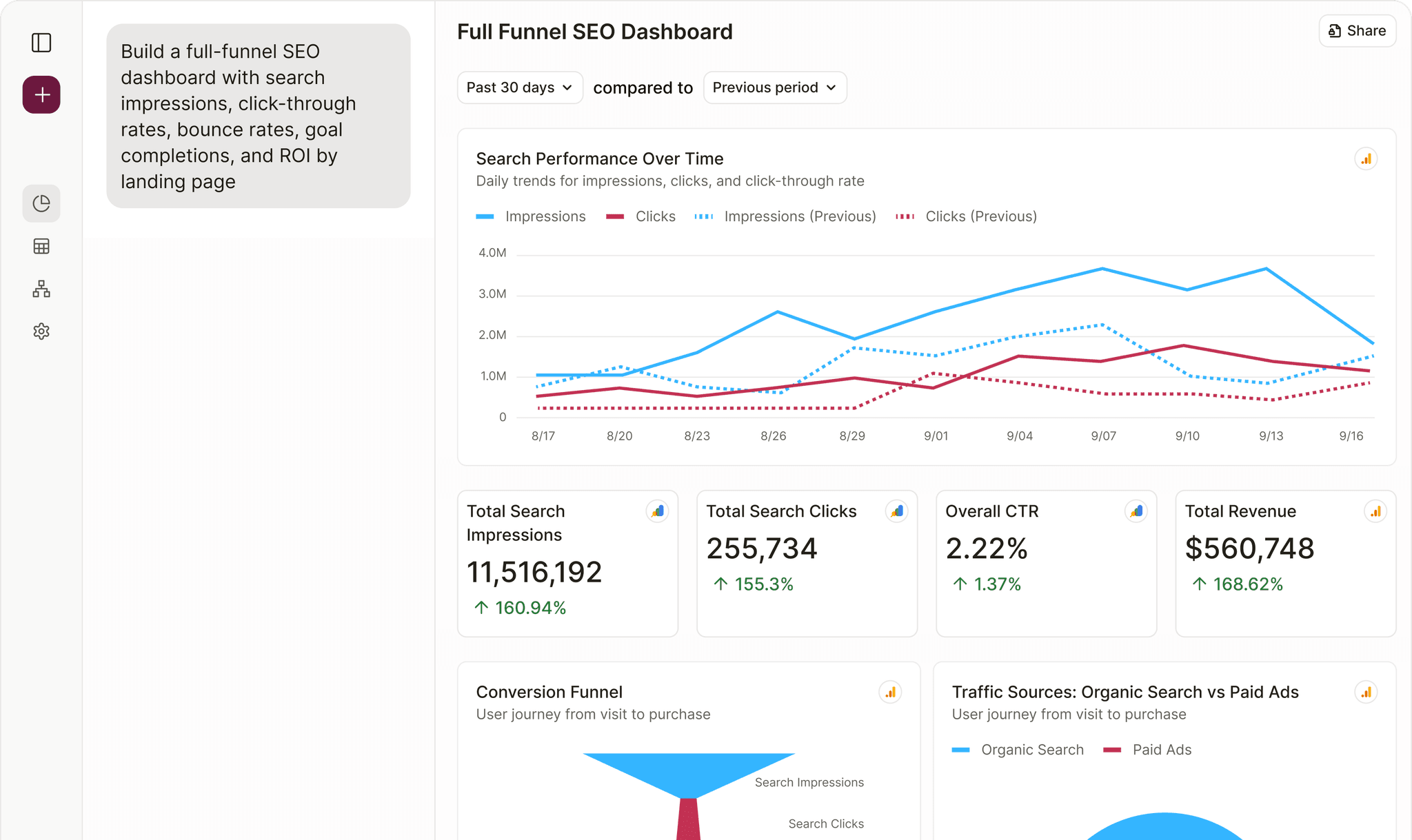
Track Workday Adaptive Planning KPIs with Filament Analytics
Connect your Workday Adaptive Planning account to Filament and instantly track your most important KPIs. All in plain English dashboards that update automatically.
View documentationKey Workday Adaptive Planning metrics you can track in Filament:
Combine Workday Adaptive Planning with other data sources
Your business runs on more than one app, and your analytics should too. With Filament, Workday Adaptive Planning lives side-by-side with sales, finance, and customer tools. Bring it all together in one intelligent workspace and finally see the full picture.














































































Your Workday Adaptive Planning data gets even more powerful when combined with other tools:
Workday Adaptive Planning + Salesforce
Connect Workday Adaptive Planning forecasts with Salesforce pipeline data to compare revenue projections against actual opportunity values, win rates by region, and sales team performance against budget targets.
Workday Adaptive Planning + Xero
Connect Workday Adaptive Planning budgets with Xero actuals to track budget variance by account, analyze departmental spending against allocations, and identify which cost centers are over or under budget in real time.
Workday Adaptive Planning + Google Ads
Connect Workday Adaptive Planning marketing budgets with Google Ads spend to monitor campaign performance against allocated budgets, track cost per acquisition by channel, and adjust forecasts based on actual advertising efficiency.
Benefits of Filament's Workday Adaptive Planning Integration
Ask in plain English
Start with a question like 'How did MRR trend last year?' and you'll get an instant dashboard from across your apps. No configuration, no code.
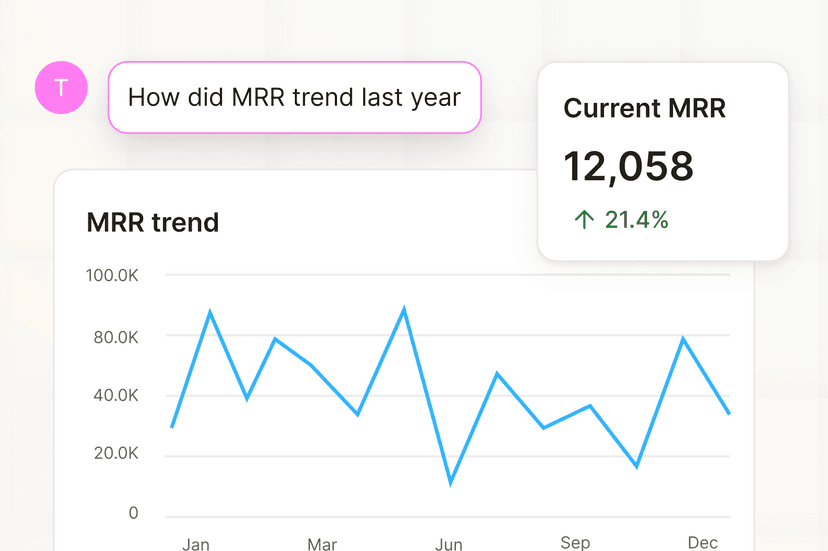
No setup
Filament is like Looker Studio or PowerBI, but it will set itself up. It understands your data, and automatically connects the dots.
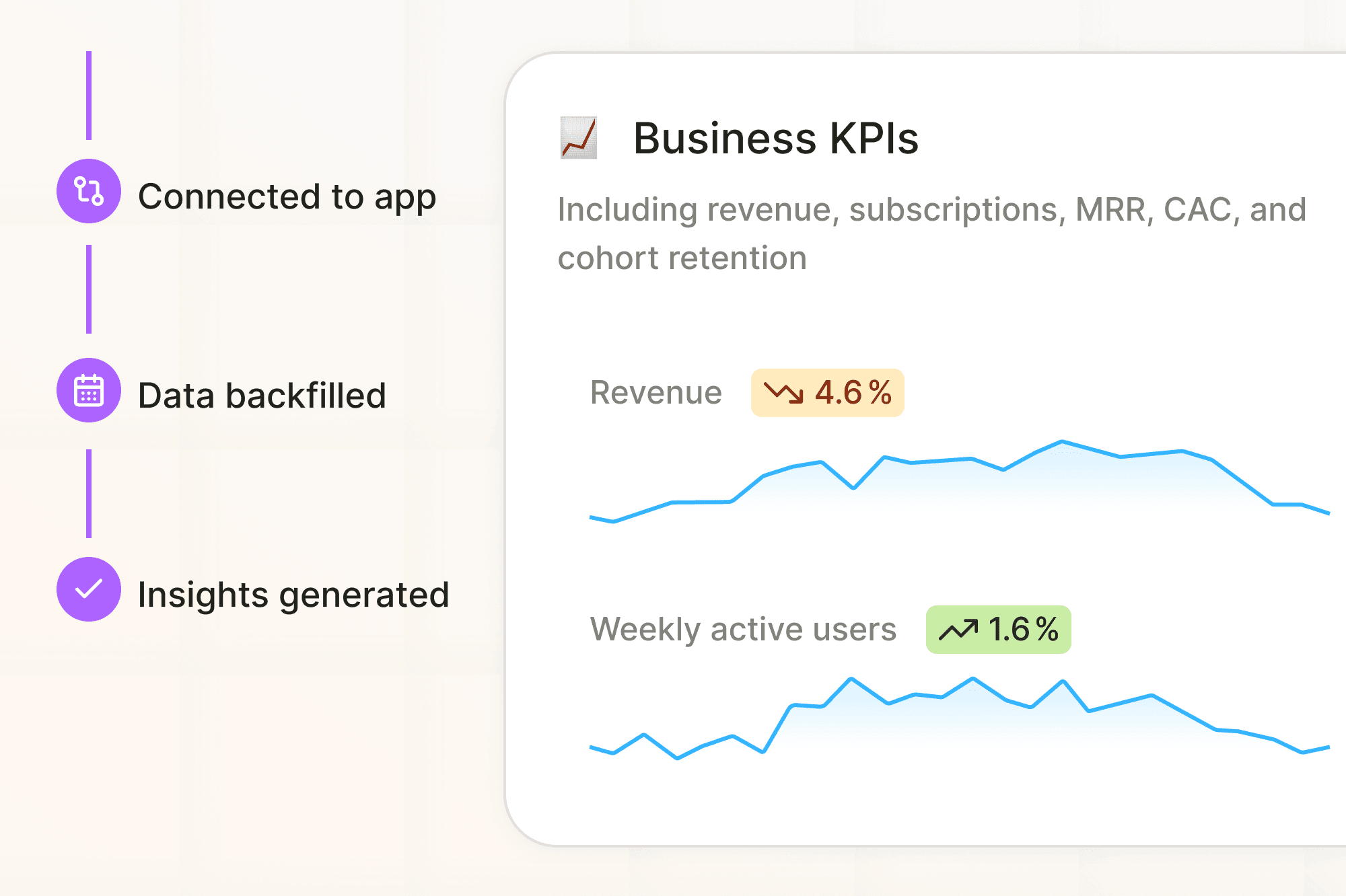
Gets smarter over time
Filament remembers your context and preferences, so you spend less time explaining and answers that align with your goals.
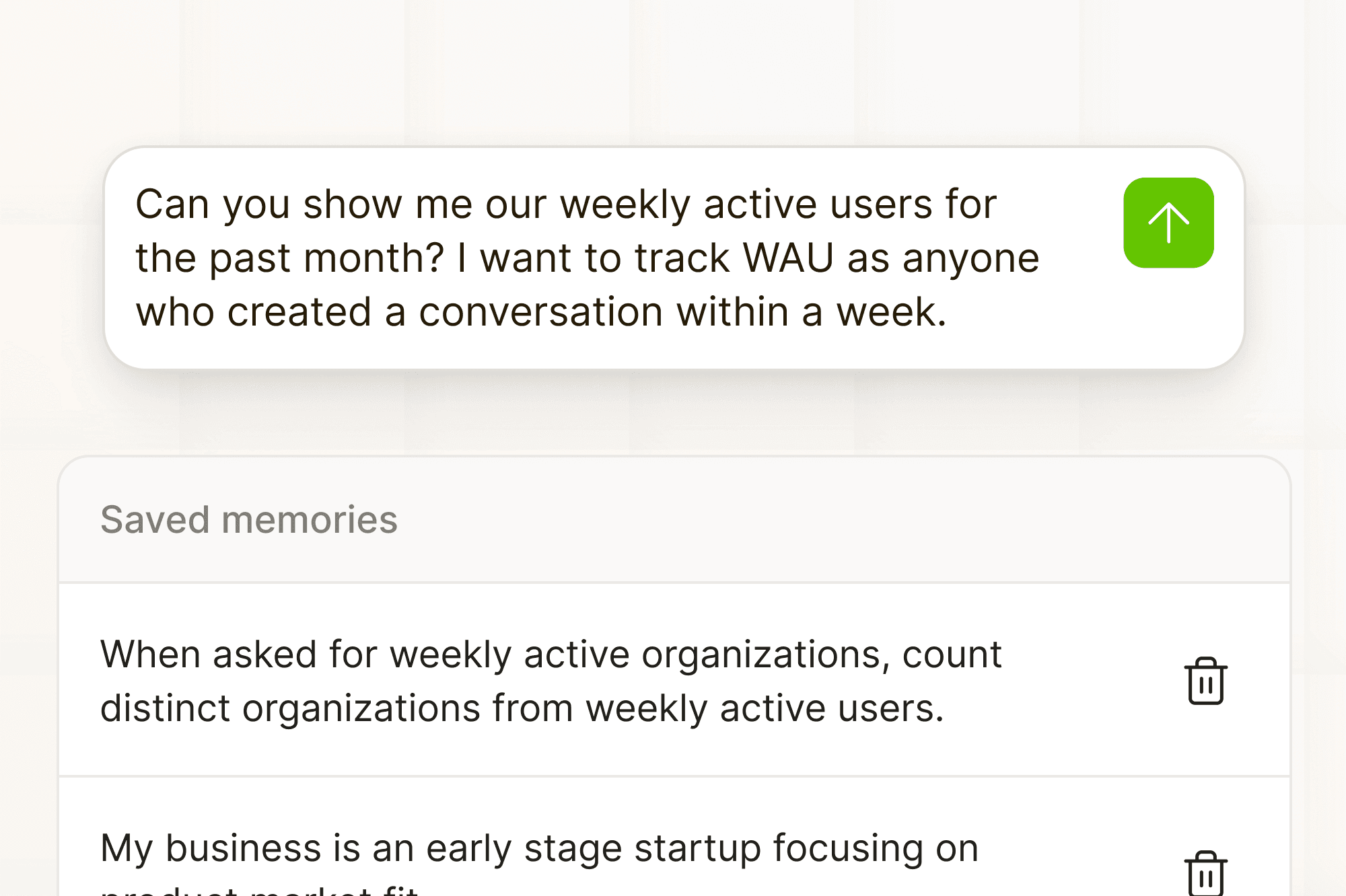
How it works
Step 1: Connect your Workday Adaptive Planning account
Connect your Workday Adaptive Planning account to Filament and get instant access to your data. No technical setup required.
Step 2: Ask questions about your Workday Adaptive Planning data
Start asking questions like "Which campaigns drive the most qualified leads?"
Step 3: Build Workday Adaptive Planning dashboards in minutes
Get tailored insights instantly and share them with your team.
Better business decisions with AI Analytics
How to get more from your data
Most teams only scratch the surface of what's possible with their data. Reports get buried in dashboards, exports pile up in spreadsheets, and critical insights never reach decision-makers. Filament changes that.
With Filament, your data is analyzed by an AI data analyst that understands plain English. Instead of struggling with complex BI tools or waiting for reports, you can instantly ask questions about revenue, marketing performance, customer engagement, or retention, and get clear answers in seconds.
Because Filament connects data across marketing, product, CRM, and finance systems, it helps you answer the bigger questions that traditional dashboards can't:
- Which campaigns and channels actually drive revenue growth?
- How does user engagement translate into pipeline or sales performance?
- Where are we losing efficiency between acquisition, retention, and finance?
By combining AI-powered reporting, conversational dashboards, and cross-platform integration, Filament helps you move beyond surface-level metrics and uncover the insights that drive smarter, faster business decisions.
Enterprise-grade security
Complete data isolation, data encryption at rest and in-transit, and secure, accredited cloud providers keep your organisation's data protected. We never use your data for AI training or share it with third parties.
Learn more about securityWorkday Adaptive Planning integration FAQ
Everything you need to know about connecting Workday Adaptive Planning with Filament and getting the most out of your data.